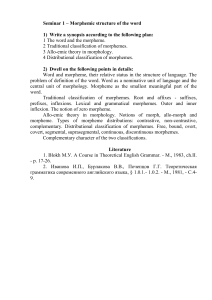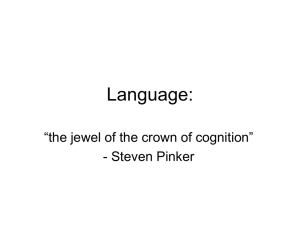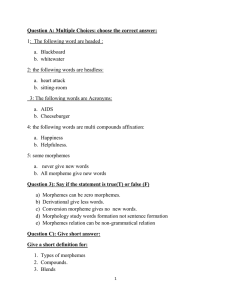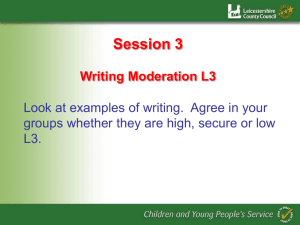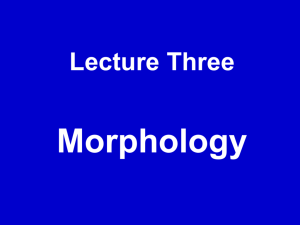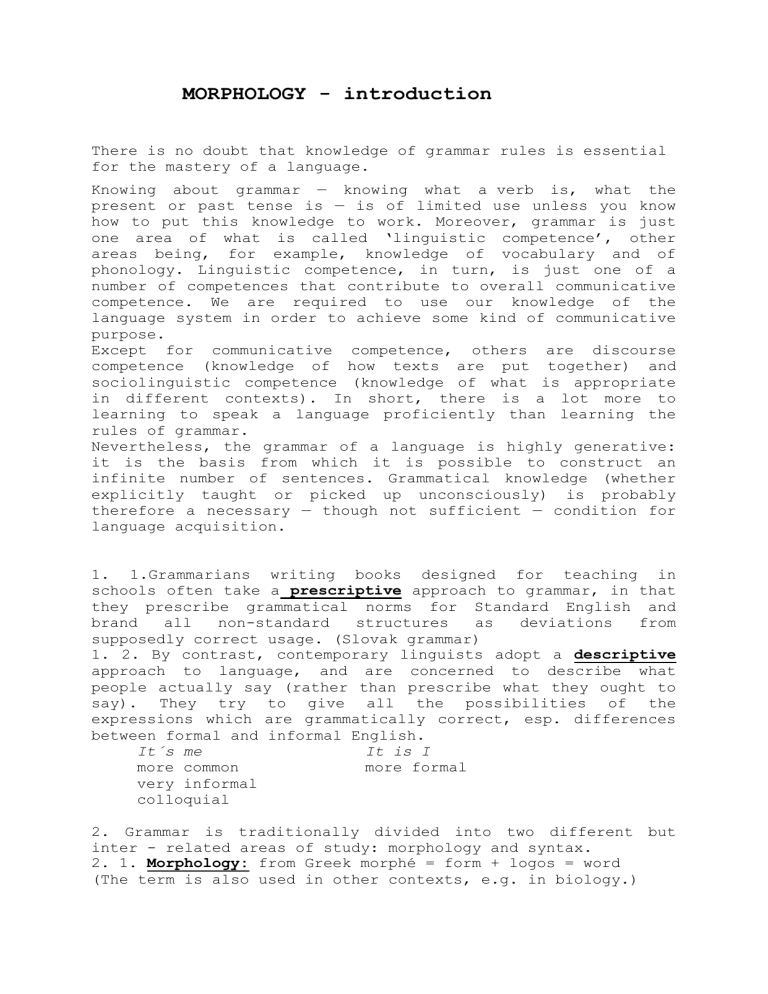
MORPHOLOGY - introduction There is no doubt that knowledge of grammar rules is essential for the mastery of a language. Knowing about grammar — knowing what a verb is, what the present or past tense is — is of limited use unless you know how to put this knowledge to work. Moreover, grammar is just one area of what is called ‘linguistic competence’, other areas being, for example, knowledge of vocabulary and of phonology. Linguistic competence, in turn, is just one of a number of competences that contribute to overall communicative competence. We are required to use our knowledge of the language system in order to achieve some kind of communicative purpose. Except for communicative competence, others are discourse competence (knowledge of how texts are put together) and sociolinguistic competence (knowledge of what is appropriate in different contexts). In short, there is a lot more to learning to speak a language proficiently than learning the rules of grammar. Nevertheless, the grammar of a language is highly generative: it is the basis from which it is possible to construct an infinite number of sentences. Grammatical knowledge (whether explicitly taught or picked up unconsciously) is probably therefore a necessary — though not sufficient — condition for language acquisition. 1. 1.Grammarians writing books designed for teaching in schools often take a prescriptive approach to grammar, in that they prescribe grammatical norms for Standard English and brand all non-standard structures as deviations from supposedly correct usage. (Slovak grammar) 1. 2. By contrast, contemporary linguists adopt a descriptive approach to language, and are concerned to describe what people actually say (rather than prescribe what they ought to say). They try to give all the possibilities of the expressions which are grammatically correct, esp. differences between formal and informal English. It´s me It is I more common more formal very informal colloquial 2. Grammar is traditionally divided into two different but inter - related areas of study: morphology and syntax. 2. 1. Morphology: from Greek morphé = form + logos = word (The term is also used in other contexts, e.g. in biology.) Morphology is the study of how words are formed out of smaller units (traditionally called morphemes). It focuses on the structure of words, dealing with inflectional endings. 2. 2. Syntax: from Latin syntaxis, and earlier from Greek syn = together + assein = arrange. Syntax is concerned with the ways in which words can be combined together to form phrases, clauses and sentences, i.e. with the structure of sentences. Modern grammars display a major shift in emphasis from that found in traditional grammars. A large part of traditional grammar was devoted to aspects of morphology while most of modern grammar of English is given over to syntax. (Quirk - A Student´s Grammar of the English Language). These two parts of grammar are closely related. MORPHOLOGY deals with the internal structure of words, in other words, morphology is the study of morphemes and the way they are joined together to make words. The term morpheme is used to refer to the smallest, indivisible units of semantic content or grammatical function which words are made up of. As the smallest linguistic units they have both form and meaning. The meaning of the morpheme is called sememe. The form of the morpheme is called formeme. The term morpheme represents an abstract unit. It is the unit of “langue” of the language system. Its concrete realizations are called morphs. Thus, the past tense morpheme –ed is found in three different pronunciations /d/ /t/ /id/. Since these three elements all represent a single morpheme, they are called morphs. If different morphs represent the same morpheme, they are called allomorphs of that morpheme. There are 2 basic types of morphemes: 1. FREE MORPHEMES 2. BOUND MORPHEMES 1. FREE MORPHEMES can stand freely by themselves as independent words (e.g. fast, build, tiger, free) 2. BOUND MORPHEMES can´t stand freely and independently, like prefixes and suffixes. They are bound or connected to free morphemes. Bound morphemes can be further divided into 2 groups: 2.1. Derivational morphemes - allow us to make new words in the language and to change one word class into another( quiet -quietness, mystery - mysterious). They are affixes, further subdivided into prefixes (re-open, un-happy), infixes (kangaroo – kanga-bloody-roo, impossible – im-fuckin-possible and suffixes (happi-ness, open-er) 2.2. Inflectional morphemes - don´t create new words or word classes but they show the grammatical function of a word. They always come at the end of the word after derivational morphemes. There are 8 of them. 4 attached to verbs, 2 attached to nouns, 2 attached to Adj -s (walks) -s (rivers) -ing (teaching) -´s (boy´s) -ed (jumped) -en (given) - irreg. V -er (greater) -est (greatest) CONVERSION Lexemes can change their word class without the addition of an affix - a process known as a conversion. (V to N - to swim, have a swim, Adj to N - national, N to V bottle, to bottle, Adj. to V - dirty, empty -to dirty, to empty) COMPOUNDS A compound is a unit of vocabulary which consists of more than one lexical stem. On the surface, there appear to be two or more lexemes present, but in fact the parts are functioning as a single item, which has its own meaning and grammar. So, flower-pot doesn´t refer to a flower and a pot, but to a single object. It is pronounced as a unit, with a single main stress. WORD CLASSES - PARTS OF SPEECH All words can be divided into two major types: 1. Content words allow us to create an image of some kind in our minds. Thus, if we hear the word tiger we are able to imagine a picture of a large striped cat. Content words are nouns, adjectives, verbs and adverbs. 2. Function words serve only to show a relationship to or between content words. Function words are pronouns, auxiliary verbs, determiners, prepositions and conjunctions.


